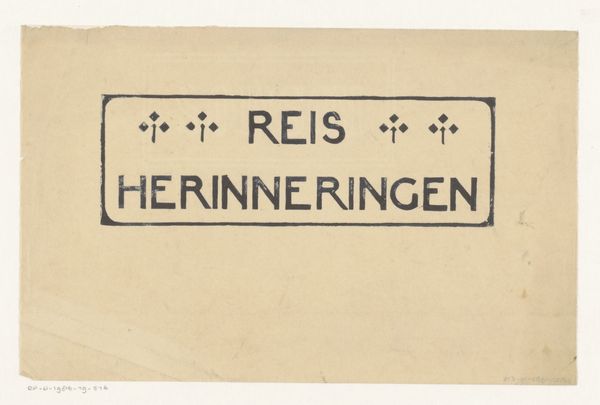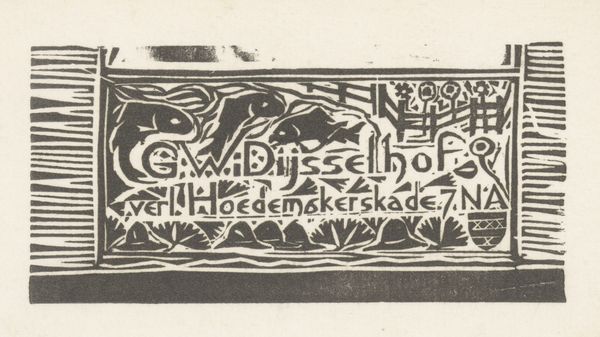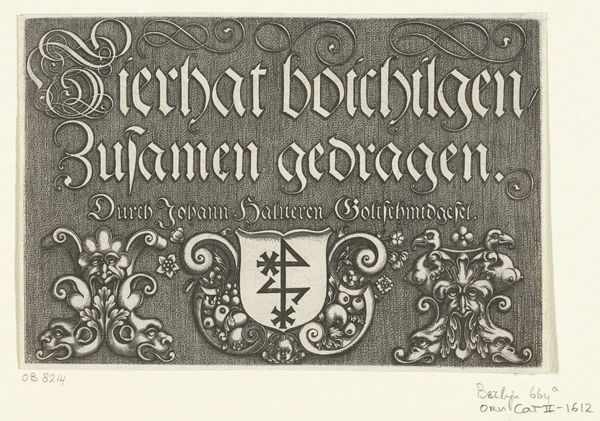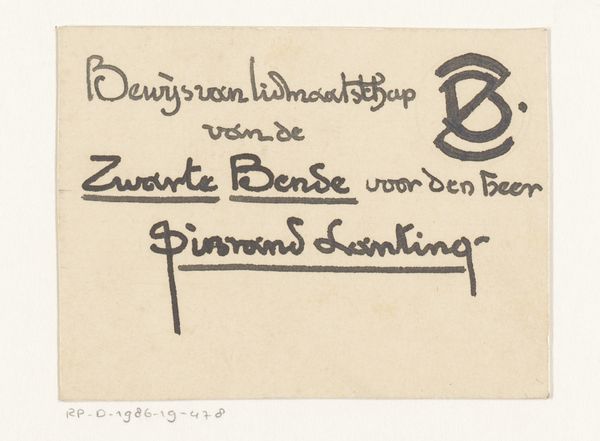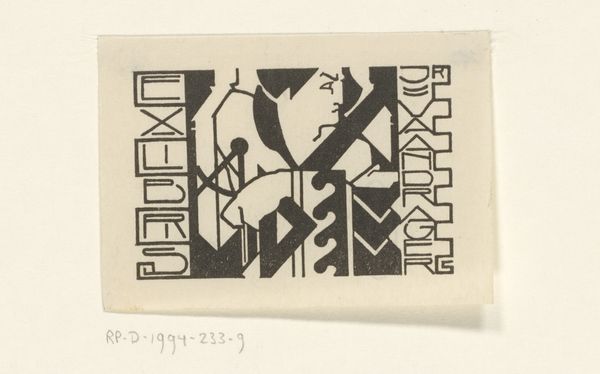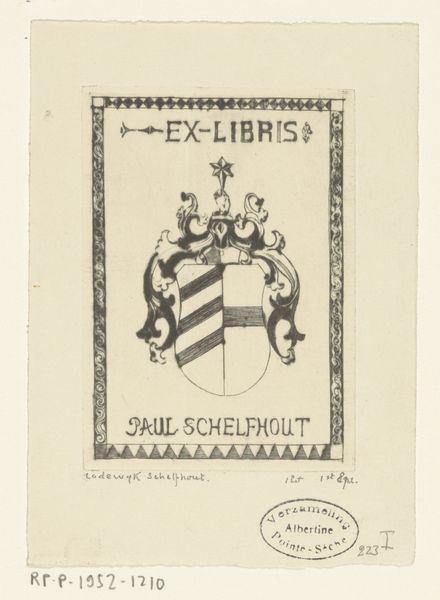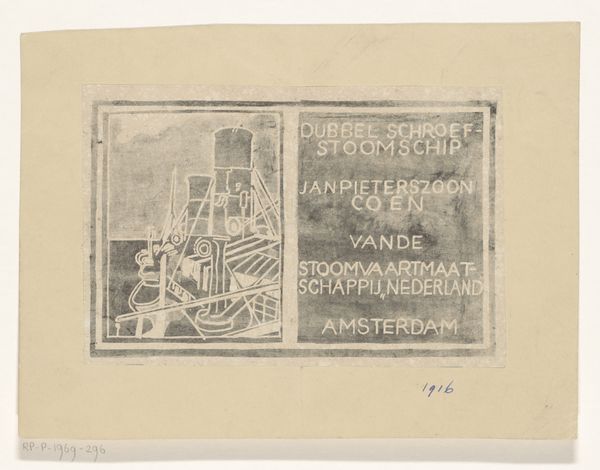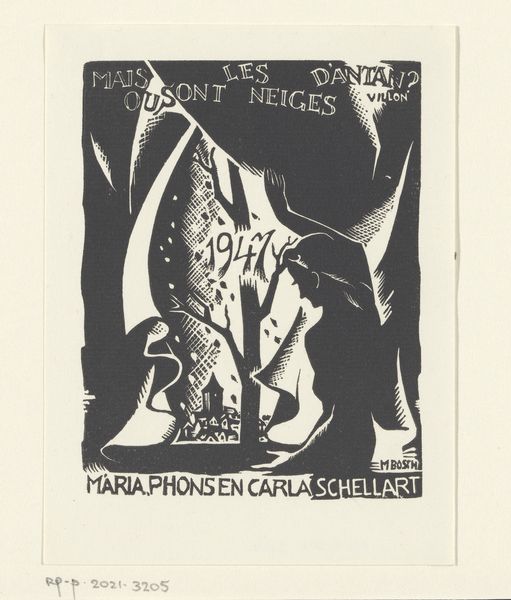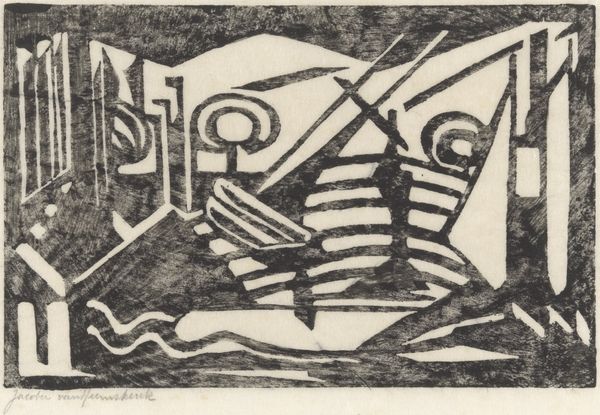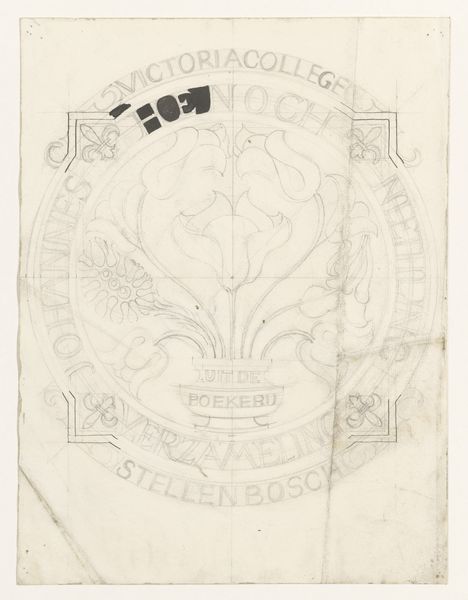
Ontwerp voor vignet in het gedenkboek voor koningin Wilhelmina uit 1923: De Nederlandsche Bouwkunst 1874 - 1945
0:00
0:00
drawing, graphic-art, ink
#
drawing
#
graphic-art
#
art-nouveau
#
pen drawing
#
form
#
ink line art
#
ink
#
geometric
#
pen-ink sketch
Dimensions: height 92 mm, width 427 mm
Copyright: Rijks Museum: Open Domain
Curator: Before us, we have Carel Adolph Lion Cachet's "Ontwerp voor vignet in het gedenkboek voor koningin Wilhelmina uit 1923: De Nederlandsche Bouwkunst," a pen and ink drawing dating somewhere between 1874 and 1945. Editor: It feels almost like a heraldic crest, doesn't it? A bold, stylized declaration rendered in stark blacks and whites, projecting both power and tradition. Curator: Yes, there's a deliberate invocation of symbolic language. Look at the repeating motif of the lion rampant intertwined with architectural elements, they could point toward strength and stability. Editor: The geometric abstraction really resonates with early twentieth-century ideals. Notice the flattening of form and stark contrast. Do you see how this deliberate lack of nuance in favor of emphasizing fundamental form might act to include then exclude a specific audience who understood it? Curator: Precisely, its visual shorthand speaks volumes. The Art Nouveau influence is unmistakable here in the stylized botanical elements; there’s also that clear geometric composition suggestive of national identity formation. It's striking how Cachet evokes both strength and progress through symbols rooted in the culture’s memory of itself. Editor: That brings to mind questions around representation itself. Whose "Dutch Architecture" is being memorialized? And what narratives are privileged through this very specific artistic style? Curator: Those are vital questions! These drawings can operate as ideological containers, and, while appearing innocuous, reflect hierarchies prevalent at the time of their creation. Perhaps we're looking at an imagined past rather than a true record. Editor: In effect, such symbolic constructs work through simplification to shape national narratives and, often, end up obscuring far more diverse, dissenting voices than are recognized within a society. This piece brings many threads into sharper focus for me. Curator: For me, seeing these repeating symbols feels like understanding one small moment from a long story of cultural meaning being communicated visually. I think viewers today could pause with this vignette and appreciate its historical resonance more richly than ever before.
Comments
No comments
Be the first to comment and join the conversation on the ultimate creative platform.

